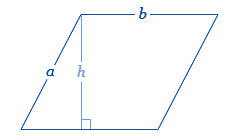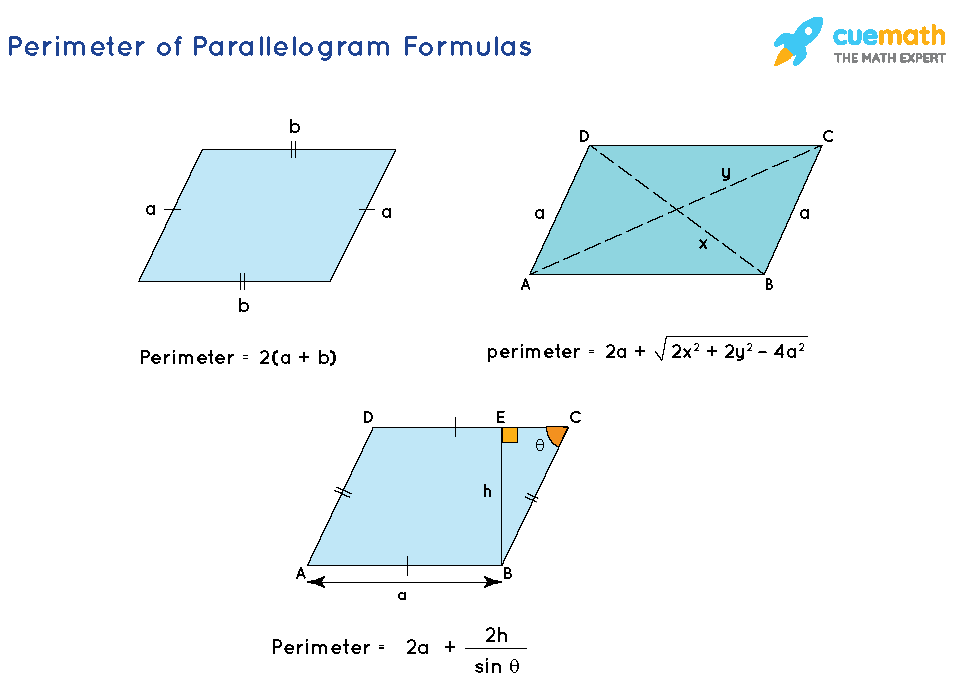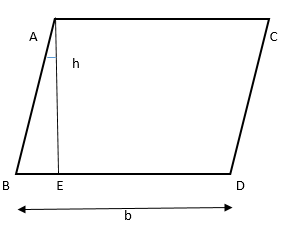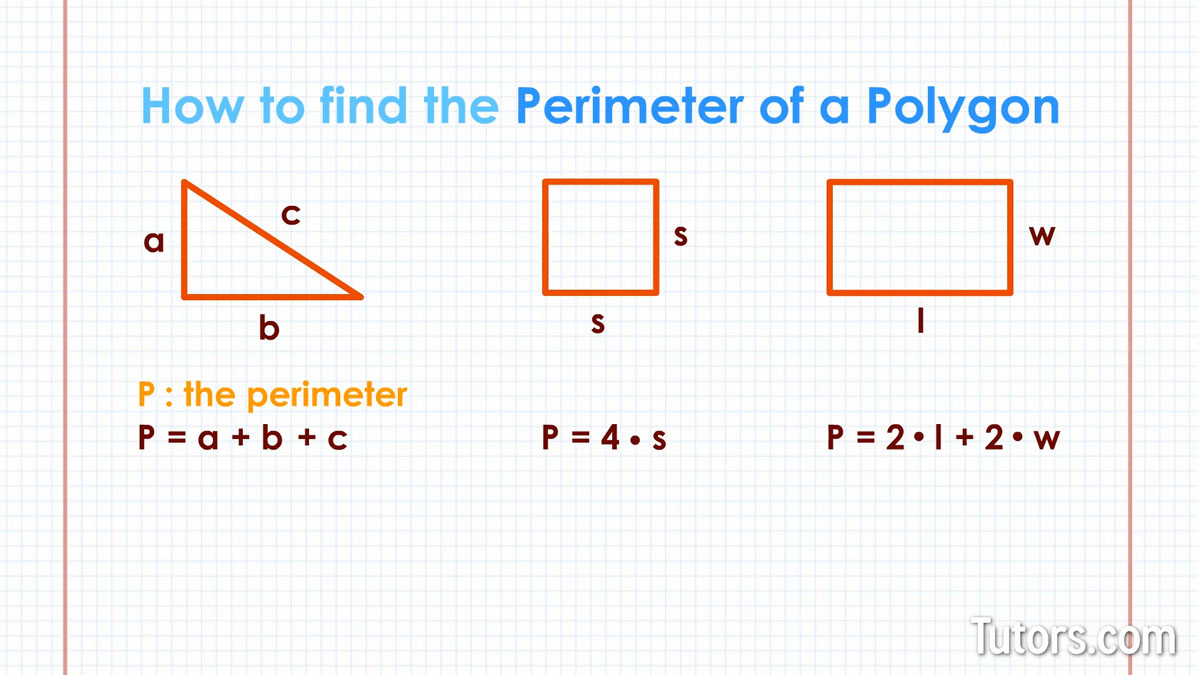Topic what is the perimeter of the parallelogram: Discover the fascinating world of geometry as we explore "What is the Perimeter of a Parallelogram?" - a comprehensive guide to understanding this fundamental geometric concept in a simple and engaging way.
Table of Content
- Definition and Basic Properties of a Parallelogram
- YOUTUBE: Perimeter of a parallelogram | Geometry | Khan Academy
- Standard Formula for Calculating Perimeter
- Alternate Formulas for Perimeter
- Calculating Perimeter with Given Diagonals
- Perimeter Calculation with Base, Height, and Angle
- Practical Examples and Problems
- Parallelogram Perimeter in Real-world Applications
- FAQs and Common Misconceptions
- Worksheets and Practice Problems
- Exploring Similar Geometric Shapes
Definition and Basic Properties of a Parallelogram
A parallelogram is a unique and fascinating two-dimensional geometric figure. It is characterized by its pairs of parallel and equal-length opposite sides, which form a quadrilateral shape. This distinctive structure lends the parallelogram certain properties and formulas that are essential in the field of geometry.
- Opposite Sides: In a parallelogram, each pair of opposite sides is not only parallel but also equal in length.
- Opposite Angles: The opposite angles in a parallelogram are congruent, meaning they have the same measure.
- Diagonals: The diagonals of a parallelogram bisect each other, dividing each diagonal into two equal segments.
- Adjacent Angles: Any two adjacent angles in a parallelogram add up to 180 degrees, making them supplementary.
- Interior Angles: The sum of the interior angles in a parallelogram is always 360 degrees.
Understanding these properties is crucial for delving deeper into geometric analysis and for calculating the perimeter and area of a parallelogram, which have significant practical applications in various fields like architecture, engineering, and design.

READ MORE:
Perimeter of a parallelogram | Geometry | Khan Academy
In this exciting video, you will learn all about perimeter and how to calculate it! Discover the key formulas and techniques to find the perimeter of various shapes and conquer any geometry problem with ease.
Standard Formula for Calculating Perimeter
The perimeter of a parallelogram is a measure of the total distance around its edges. The calculation of this perimeter is straightforward, thanks to the unique properties of parallelograms. Understanding this formula is essential for students, architects, and geometry enthusiasts alike.
The standard formula to calculate the perimeter (P) of a parallelogram is given by:
- Formula: P = 2(a + b)
- Here, \"a\" and \"b\" represent the lengths of the adjacent sides of the parallelogram.
- Since opposite sides of a parallelogram are equal, the formula essentially sums the lengths of all four sides.
This formula simplifies the calculation process, as you only need to know the lengths of two adjacent sides. Let\"s break down the formula with an example:
- Suppose a parallelogram has side lengths of 6 cm (a) and 4 cm (b).
- Applying the formula: P = 2(a + b) = 2(6 + 4) = 2(10) = 20 cm.
- Thus, the perimeter of this parallelogram is 20 cm.
This formula forms the foundation for more advanced geometrical problems and has practical applications in various fields such as design and construction.

How To Calculate Perimeter Of Parallelogram
Get ready to become a master in calculations with this engaging video! Join us as we explore different methods to calculate complex equations and solve math problems effortlessly. From basic arithmetic to advanced techniques, this video will equip you with the skills you need.
Area of Parallelograms | How to Find the Area of a Parallelogram
Dive into the world of geometry and unlock the secrets of finding area with this captivating video! From triangles to circles, we will show you step-by-step how to calculate the area of different shapes and tackle geometry challenges like a pro. Don\'t miss out on enhancing your math skills and watching this informative video.
Alternate Formulas for Perimeter
While the standard formula for the perimeter of a parallelogram (P) is P = 2(a + b), where \"a\" and \"b\" are the lengths of adjacent sides, there are other ways to calculate the perimeter when certain other dimensions are known.
Using One Side and Diagonals
When one side (a) and diagonals (x and y) are known, the perimeter can be calculated using the formula:
P = 2a + √(2x² + 2y² - 4a²)
This formula arises from the law of cosines and the relationship between the sides and diagonals of a parallelogram.
Using Base, Height, and Angle
If you know the base (a), height (h), and an angle (θ) of the parallelogram, the perimeter can be calculated using trigonometric functions:
P = 2a + 2(h/sin(θ))
This formula is particularly useful when dealing with parallelograms that are not right-angled, as it utilizes the sine function of the given angle.
Examples
- Example 1: A parallelogram has one side of 7 units and diagonals of 8 and 10 units. Using the first alternate formula:
- P = 2 * 7 + √(2 * 8² + 2 * 10² - 4 * 7²) = 25.49 units (approximately)
- Example 2: A parallelogram has a base of 15 yards, a corresponding height of 20 yards, and a vertex angle of 30 degrees. Using the second alternate formula:
- P = 2 * 15 + 2 * (20 / sin(30°)) = 110 yards
These alternate formulas are particularly useful in situations where the traditional length measurements of the sides are not available, allowing for flexibility in calculating the perimeter based on other known dimensions of the parallelogram.

Calculating Perimeter with Given Diagonals
Calculating the perimeter of a parallelogram when only diagonals are known involves a more complex formula derived from the law of cosines. This method is used when the lengths of one side and the diagonals are given, but the other side is unknown.
Perimeter Formula Using One Side and Diagonals
The formula to calculate the perimeter of a parallelogram (P) with one side (a) and diagonals (x and y) is:
P = 2a + √(2x² + 2y² - 4a²)
This formula is derived from the parallelogram law, which relates the sides and diagonals of a parallelogram.
Steps to Calculate Perimeter
- Identify the lengths of one side (a) and both diagonals (x and y) of the parallelogram.
- Apply the formula: P = 2a + √(2x² + 2y² - 4a²).
- Calculate the value inside the square root first, then add it to twice the length of the known side.
Example
For a parallelogram with one side of 7 units and diagonals of 8 and 10 units:
P = 2 * 7 + √(2 * 8² + 2 * 10² - 4 * 7²) = 25.49 units (approximately)
This method is crucial when dealing with parallelograms where direct measurement of both sides is not feasible, but the diagonals are known. It allows for a complete understanding of the perimeter of the shape using available geometric properties.

Perimeter Calculation with Base, Height, and Angle
To calculate the perimeter of a parallelogram when you know its base, height, and one of the angles, you can use a formula that involves trigonometric functions. This method is particularly useful in scenarios where the lengths of the sides are not directly known but other measurements are available.
Formula for Perimeter Calculation
The formula to calculate the perimeter (P) is:
P = 2a + 2h / sin θ
Here, \"a\" is the base of the parallelogram, \"h\" is its height, and \"θ\" is the angle. Note that any angle of the parallelogram can be used in this formula since adjacent angles are supplementary.
Steps to Calculate the Perimeter
- Identify the base (a), height (h), and one angle (θ) of the parallelogram.
- Calculate the value of the sine of the angle (sin θ).
- Apply the formula: P = 2a + 2h / sin θ to find the perimeter.
Example Calculation
For a parallelogram with a base of 15 yards, a height of 20 yards, and a vertex angle of 30 degrees, the perimeter calculation would be:
P = 2 * 15 + 2 * 20 / sin(30°) = 110 yards
This approach is essential for understanding the perimeter of parallelograms in more complex scenarios where direct measurements of all sides are not available, allowing us to use trigonometric principles to solve the problem.

_HOOK_
Practical Examples and Problems
Understanding the perimeter of a parallelogram can be enhanced by solving practical examples and problems. These examples illustrate how the formulas for calculating the perimeter can be applied in various situations.
Example 1: Perimeter with Given Adjacent Sides
Consider a parallelogram with adjacent sides of 5 units and 9 units. To find the perimeter (P), use the formula P = 2(a + b):
P = 2(5 + 9) = 2 × 14 = 28 units
Example 2: Perimeter Using One Side and Diagonals
For a parallelogram with one side of 7 units and diagonals of 8 units and 10 units, apply the formula P = 2a + √(2x² + 2y² - 4a²):
P = 2 × 7 + √(2 × 8² + 2 × 10² - 4 × 7²) = 25.49 units (approximately)
Example 3: Perimeter with Base, Height, and Angle
A parallelogram has a base of 15 yards, height of 20 yards, and a vertex angle of 30 degrees. The perimeter is found using P = 2a + 2h / sin θ:
P = 2 × 15 + 2 × 20 / sin(30°) = 110 yards
Problem Solving Tips
- Identify which dimensions of the parallelogram are given (sides, diagonals, angles, etc.)
- Select the appropriate formula based on the available information.
- Apply trigonometric functions correctly if the problem involves angles.
- Check units of measurement to ensure consistency in the calculation.
These examples demonstrate the practical application of perimeter formulas in different scenarios, emphasizing the importance of understanding the properties of parallelograms and the use of geometry in solving real-world problems.

Parallelogram Perimeter in Real-world Applications
The perimeter of a parallelogram, defined as twice the sum of its adjacent sides, finds a myriad of applications in everyday life and various fields. This section explores some of these real-world examples, illustrating the practicality of understanding parallelogram perimeters.
Architecture and Construction
- Buildings: Modern architecture often employs parallelogram shapes for their unique aesthetics. An example is the dockland office building in Hamburg, Germany.
- Roofs: The side look of gable, saltbox, or shed roofs can resemble parallelograms, emphasizing the significance of understanding their perimeter for construction purposes.
Everyday Objects
- Tiles: Parallelogram-shaped tiles are popular in industries for flooring and wall decorations, highlighting the importance of perimeter calculations for fitting and arranging them.
- Desks: Many desks and tables have parallelogram shapes (including rectangles), where perimeter understanding is key for design and space utilization.
- Solar Panels: Parallelogram-shaped solar panels are commonly used, as their design allows for efficient attachment and layout on various structures.
Art and Design
- Cardigan Patterns: Parallelograms are often used in the design of cardigans and sweaters, where knowing the perimeter can assist in pattern creation and fabric estimation.
- Striped Poles: The slanting stripes on poles, forming parallelograms, showcase the application in design and visual arts.
Music Instruments
- Guitar Fret Boards: The marker bars on fret boards often take a parallelogram shape, where understanding their perimeter can be essential for design and manufacturing.
Educational Applications
- Parallelogram perimeters are crucial in educational settings, particularly in geometry and mathematics, for teaching students about shapes and their properties.
In conclusion, the concept of parallelogram perimeter is not only fundamental in geometry but also has versatile applications in various real-world scenarios. From architecture to design, and from everyday objects to educational tools, the understanding of parallelogram perimeters proves to be invaluable.

FAQs and Common Misconceptions
Frequently Asked Questions
- What is the formula for the perimeter of a parallelogram?
- The basic formula for the perimeter of a parallelogram is P = 2(a + b), where \"a\" and \"b\" are the lengths of the adjacent sides. This formula is derived from the fact that opposite sides of a parallelogram are equal in length.
- Can the perimeter of a parallelogram be found with base, height, and angle?
- Yes, the perimeter can also be calculated using the formula P = 2a + 2h / sinθ, where \"a\" is the side of the parallelogram, \"h\" is the height, and \"θ\" is one of the vertex angles.
- How is the perimeter of a parallelogram determined using diagonals?
- When diagonals are involved, the formula used is P = 2a + √(2x² + 2y² - 4a²), where \"a\" is a side of the parallelogram, and \"x\" and \"y\" are the lengths of the diagonals.
- Is it possible to calculate the perimeter of a parallelogram if only one side is known?
- No, knowing only one side is insufficient. The length of at least one adjacent side, a diagonal, or the height and an angle is required.
- Are the diagonals of a parallelogram equal?
- No, the diagonals of a parallelogram are not necessarily equal, but they bisect each other.
Common Misconceptions
- All Sides of a Parallelogram are Equal:
- This is not true. Only opposite sides of a parallelogram are equal and parallel, not necessarily all four sides.
- Parallelograms Always Have Right Angles:
- Not all parallelograms have right angles. A rectangle is a special type of parallelogram that has right angles, but general parallelograms do not have this property.
- Area and Perimeter Formulas are Interchangeable:
- The formulas for area and perimeter of a parallelogram are different and cannot be used interchangeably. The perimeter is the sum of the lengths of the sides, while the area is the product of base and height.
- Diagonals are Used in the Standard Perimeter Formula:
- Diagonals are not used in the standard perimeter formula (2(a + b)). They are involved in a different formula for special cases where sides are not known.

Worksheets and Practice Problems
Explore a variety of worksheets designed to deepen understanding and proficiency in calculating the perimeter of parallelograms. These worksheets are suitable for students ranging from grade 3 to grade 8.
Types of Worksheets Available:
- Basic perimeter calculations using integers, decimals, and fractions.
- Worksheets focused on finding missing dimensions by solving algebraic expressions.
- Advanced problems including conversion to specified units.
- Worksheets designed for practicing area and perimeter calculations simultaneously.
- Activities for identifying and differentiating parallelograms from other geometric shapes.
Worksheet Formats:
- Printable PDF worksheets for in-class and home practice.
- Interactive worksheets with step-by-step explanations for complex problems.
- Coloring activities to identify and understand the characteristics of parallelograms.
- Task cards and challenge problems for group activities and peer learning.
These resources are designed to cater to different learning styles and levels, ensuring a comprehensive understanding of the concept of parallelograms\" perimeters. Teachers and parents can select worksheets based on the student\"s grade and proficiency level.

READ MORE:
Exploring Similar Geometric Shapes
Parallelograms are intriguing shapes in geometry, characterized by their opposite sides being parallel and equal in length. This characteristic is shared with other geometric shapes, such as squares, rectangles, and rhombuses, which are all special types of parallelograms.
Squares and Rectangles: A square is a parallelogram where all four sides are equal and all angles are right angles. Rectangles, on the other hand, have equal opposite sides with all angles being right angles. These shapes exemplify how the properties of parallelograms can be extended and varied in specific circumstances.
Rhombuses: A rhombus is another form of a parallelogram where all sides are equal in length, but unlike a square, the angles are not necessarily 90 degrees. The rhombus emphasizes the versatility of parallelograms in terms of angle variation while maintaining side equality.
Comparing Perimeters: The formula for the perimeter of a parallelogram, P = 2(b + s), where \"b\" is the base and \"s\" is the side length, is also applicable to squares, rectangles, and rhombuses with adjustments based on their properties. For instance, in a square where all sides are equal, the perimeter formula simplifies to 4 times the side length.
Diagonal Properties: In parallelograms, diagonals bisect each other but are not necessarily equal. This contrasts with squares and rectangles, where diagonals are equal, highlighting another interesting aspect of how these shapes relate to and differ from each other.
Understanding these similarities and differences enhances our comprehension of geometric shapes and their properties, especially in the context of calculating perimeters and understanding the role of angles and side lengths.
Discover the fascinating world of geometry through the lens of parallelograms. From basic definitions to practical applications, our journey demystifies how to calculate the perimeter, making it an engaging and insightful read for all geometry enthusiasts.

_HOOK_










